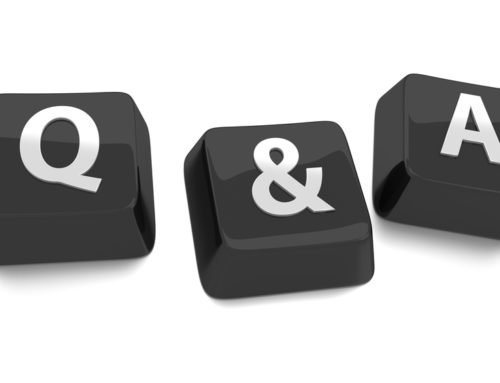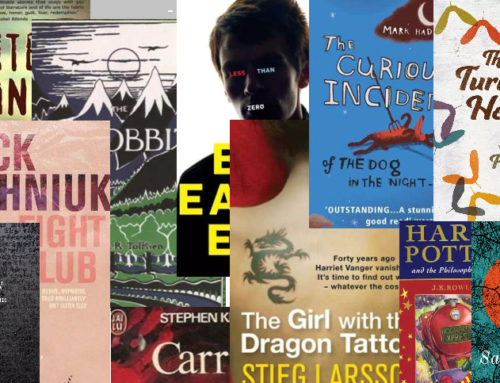[by Ross Browne and John Robert Marlow]
Publishing has changed a lot in the 43 years since The Editorial Department opened its doors—and not necessarily for the better, in the eyes of many. But it’s nonetheless an exciting time to be a writer, in large part because when it comes to getting published, you have more options than ever before.
While traditional publishing’s priorities often feel more corporate and profit-driven in this era, there are still plenty of fine literary agents and publishers out there looking for new voices, publishing them well, and helping them find enthusiastic audiences. The competition is incredibly stiff, but this time-honored path to publication is still viable as ever.
And the climate has done nothing but improve for authors who want to sidestep the “permissions model” of traditional publishing and bring their books to readers directly. The infrastructure to support this—the tools and resources to design, produce, and distribute books of very high quality—has never been more robust or affordable. And while the Hugh Howeys, Amanda Hockings, and E. L. Jameses of the world might still be considered outliers in terms of their success in enjoying massive sales of self-published titles, the number of writers making decent money (if not an actual living) from indie book sales continues to grow. Many of the authors we have worked with have had terrific experiences going this route and wouldn’t dream of doing it any other way. Some have even defected from traditional publishing and never looked back.
When to start planning your path to publication
In those magical moments when inspiration strikes and you begin writing a book, the last thing on your mind may be “Who is going to read this? How will it be published?” Perhaps that’s for the best. However, for many writers, it is never too early to start thinking about the end goal: publication.
No matter where you are in that journey, it’s good to be aware of the decisions you’ll need to make when your manuscript is ready to become ready for public consumption as a book. The biggest of these is whether to pursue traditional publication or to publish the book yourself. Here’s some information and a quick look at the pros and cons of both.
TRADITIONAL PUBLISHING
Traditional publishing is simply an established third-party publisher paying you for the rights to publish your work. It then publishes your book and makes it available to retailers, libraries, and book clubs through any number of distribution channels.
Pros
- The possibility of a book advance (often modest, sometimes sizable, and occasionally huge).
- The prestige of a known and respected publishing brand behind your book.
- Considerably better odds of having your books available in brick-and-mortar bookstores, at least for a short while.
- No author investment required for book and cover design and publishing costs.
- Design and preproduction tasks are handled by the publisher rather than you.
- The possibility of marketing and promotional support, arranged and paid for by your publisher.
- Betters odds of regional and national media exposure.
- An established publishing entity supports you, making sure your book meets suitable standards of quality.
Cons
- The competition for traditional publishing contracts is, as mentioned, incredibly stiff. The vast majority of books submitted for publication are rejected rather than accepted, and many very good books don’t make the cut.
- The trend toward consolidation among major publishers and a model that some feel prioritizes corporate profits over literary or creative merit has changed how new authors are acquired and, to an extent, the kinds of books that are most sought after.
- Most major commercial trade publishers won’t consider submissions from authors directly. This means you’ll need a literary agent.
- The competition for literary agents is also stiff, and the process of getting one is not for the thin-skinned or faint of heart. Good agents are hard to land and can take a long time to find. (As with publishing deals, an exponentially higher number of manuscripts are rejected than accepted on the hunt for literary representation.)
- Literary agents, who find publishers for authors and negotiate book deals, work on commission, which means 10–15 percent of your book advance and royalty payments go to your agent and not you.
- Many publishers expect authors to have a robust, established platform (professional following, mailing list, social media presence, etc.), which many new authors don’t have. Those that don’t may be at a serious disadvantage, no matter how good their book is.
The biggest requirement in going the traditional route is patience. Finding a good literary agent can take months or even years. (And you may or may not be successful.) The same holds true for your agent’s effort at finding you a publisher. (Which, again, may or may not be successful. Landing a literary agent is no guarantee of publication.) In the happy event that you get an offer and sign a contract, it can easily take up to two years for your book to reach bookshelves.
We often joke that publishing moves in geologic time. That’s why patience is such a supreme virtue if you try to go traditional. (And why the willingness to be persistent is a must.) That said, there’s a good deal of help we can provide if you got this route, and we have helped many good authors and agents find one another over the years. (More information is available at our Traditional Publishing Support Homepage.)
SELF-PUBLISHING
Though there are many ways to go about it, self-publishing (or indie publishing, as it’s often referred to) means publishing a book on your own rather than trying to entice a third-party publisher to do it for you. Anyone considering self-publishing should be prepared to pay all design, editing, and publishing costs out of pocket and take responsibility for all facets of their book’s publication (and in return keep all the profits generated by sales rather than the small share you get in a traditional publishing deal.)
There are user-friendly resources in place to make publishing your own book easier and more affordable than it’s ever been, but as a general rule, self-publishing demands considerably more legwork from authors than traditional publishing, in exchange for a guarantee of publication and a faster track to a book release.
One thing to keep in mind is that there’s much more to publishing a book than meets the eye, especially doing so to a high standard of quality. If you do it fully on your own, you need to educate yourself on best practices and plan and execute your publication smartly. Or you can consider hiring a book shepherd or working with an assisted publisher to handle all the legwork. Both are viable options, and this is a topic we’ll explore in another blog post.
The good news is that prices for quality book design and pre-production have come down quite a bit in recent years, and it no longer costs a fortune (or even a small fortune) to prepare a book for publication. How much it costs exactly depends on who you work with, but the total cost is a fraction of what it used to be and within comfortable budgetary reach like never before.
Pros
- Guaranteed publication. If you self-publish your own book, the sometimes soul-crushing question of whether or not your book will ever be published goes out the window. For many writers, this is of utmost importance. It levels the playing field in some respects and gives any book a legitimate chance of being successful if it’s good.
- No more gatekeepers, like the dozens who turned down Harry Potter or the nearly 144 who passed on Chicken Soup for the Soul. Sure, those (and scads more rejected bestsellers) were eventually published—but how many more potentially successful books never were?
- Instant publication. As mentioned, when a traditional publisher accepts your book, expect to wait a year (minimum) for publication. That’s after it takes you months (or in some cases years) to find an agent. Self-published books can be uploaded in minutes and available worldwide in hours to days. (On the other hand, you must avoid the temptation to upload before the book is as good as it can be.)
- No more limits. A traditional publisher will often limit you to a book every year or two and may prevent you from creating anything they consider a “competing work.” Indie authors can (and often do) spin out whole series in a year (or less). You own it and can do whatever you like with the book and all other story and character rights, forever.
- You’ll never go out of print or wind up in a situation where the publisher refuses to sell your book but won’t revert the rights—essentially keeping this title out of print for the rest of your life.
- An endless supply of books. No need to worry about doing an interview and then finding out there are only two of your books in the state, or doing a tour when your publisher can’t manage to get your books to your venues (which happened to Rex Pickett with Sideways) or—worse—sends the wrong author’s books to your speaking engagement (which happened to James Patterson). You get your books at cost instead of at the second- or third-tier discount offered by traditional publishers. (That’s right: the bookstores get a better deal than you do.)
- Better royalties. Instead of trying to interpret the sometimes-Byzantine royalty statements that tell you how much you’ve earned on the sales of steeply-discounted books (and winding up with single-digit royalties), you’ll get more like 70% from venues like Amazon. In fact, you may well make more off an indie ebook you sell for $2.99 than you will from a $25 hardcover sold by your traditional publisher. And you will get a royalty on every book you sell. (Traditional publishers, on the other hand, typically refuse to pay royalties on books purchased for sale by the author.)
- Reader-friendly pricing model. Let’s say you’re a reader looking for a few good books. Perhaps you’re looking for new authors and have $25 burning a hole in your pocket. That’ll get you one $25 trad hardcover, or maybe one and a half if they’re steeply discounted. It might get you two trade paperbacks. Or maybe three mass-market paperbacks. Or (at trad prices) two ebooks. Or you can buy 5–8 (or more) indie ebooks, depending on cover price (generally $2.99–$4.99).
- Let’s say (to be generous) that a traditional publisher offers you an average royalty of 10% across all print editions, compared with Amazon’s 70% on ebooks. So $25 in trad book sales gets you $2.50 after your advance has been paid back, the reserve-against-returns has been withheld, and the publisher’s expenses recouped. And $25 in indie ebook sales gets you $17.50. Even if your trad pub is giving you half the ebook sale price as a royalty, ebook readers by and large are buying indie ebooks instead because the prices are so much lower.
- Fast(er) payment. Amazon, for example, pays you 60–90 days after your books are sold. Some direct-from-your-website services pay you in hours. Your trad publisher can take 6–12 months for royalties due after their expenses and return reserves.
- No commissions. Most traditional publishers only take submissions from literary agents, which means 15% of your income goes into someone else’s pocket. We don’t begrudge this, as most agents work very hard for their clients and deserve every penny they keep in commissions. But it’s worth keeping in mind as you consider the economics of your publishing decision.
- No-bull accounting. You’ll get paid a percentage of the cover price, instead of a percentage of a percentage of a percentage after bookseller discount and publisher overhead (Fifth Avenue offices, anyone?) are taken into account.
- Print on demand (POD) technology means you don’t have to print 10,000 books in advance and hope they sell; books are printed when ordered—at no upfront cost to you. So there’s no need to buy lots of inventory or warehouse your books.
- Online venues handle orders and delivery automatically. Printing, order fulfillment, shipping of print books, and digital delivery of ebooks can all triggered at the point of sale once your title is set up and your book is available online. Same for money collection and payments to you.
- You can set your own prices and change them at will.
- You control the book’s content and can change or update (or excerpt) at will.
- You control the final draft, the cover, and any promotional copy and advertising.
- Direct audience connection. Traditional publishers are thought to have, at least in some cases, no idea who reads their books. Sure, they have a target demographic, but their actual customers are mostly not readers but bookstores. Indie authors, on the other hand, often cultivate mailing lists (aka newsletters) to keep in touch with their fans. Readers sign up to receive news about the author, bonus stories, reader polls, book release dates, etc. The author communicates directly with readers—who are much more engaged than they would be with some multi-billion-dollar publishing conglomerate.
- Serious upside. Many indie authors you’ve probably never heard of are making six figures a year—and some are making six figures a month—whereas many household-name trad-published authors need day-jobs to pay the bills. Obviously, most authors—trad and indie—toil in relative obscurity (and should not quite their day jobs.) But for those who have the ability to connect with a broad audience and take advantage of the freedoms and flexibility indie publishing provides, the indie upside is extreme.
- Again (this bears repeating): you own all rights. Print, ebook, audiobook, movie/series, translation, merchandising, you name it. There’s no publisher demanding a cut or (worse) sitting on rights they can’t be bothered pursuing.
Cons
- No book advance.
- You pay for editing, cover, book formatting, and cover design.
- Indie titles are harder to get into brick-and-mortar bookstores.
- No publisher-directed marketing and distribution efforts (which are, in most cases, minimal at best; Google “will my traditional publisher promote my book?”).
- You must handle/arrange for quality control yourself—writing, editing, cover, book formatting, promotional copy, etc. (If you’re looking for personal control, this is a pro, not a con.)
The Editorial Department can provide any editing needed along with guidance and education on the best practices for self-publishing. We can also provide professionally authored flap and promotional copy to support your book marketing effort. (More information is available at our Self Publishing Support Homepage.)
But will my book sell?
Unfortunately, there’s no guarantee that either path to publication will result in strong sales, though the possibility certainly exists in both channels. Our clients’ experiences with both self and traditional publishing have been all over the map. Some titles have been incredibly successful—six-digit sales, film options, making the NYT bestseller list, rave reviews in industry trades, and winning awards. Some have sold well but more modestly. And some have sold barely at all, often due to a lack of proactive effort to drive sales. (Either from the publisher, the author, or both.)
In general, we’ve found traditionally published titles often make a splash and enjoy their best sales early on after release, with sales tapering after that. Sales with self-published books often start slower but build over time. In general, the more proactive you are in the effort to get exposure for your book, attract readers, encourage reviews/word of mouth, and so forth, the better your book is likely to do. We’re deeply sympathetic to how far marketing can fall out of many authors’ comfort zones, but it’s necessary to engage with, no matter how your book is published.
The good news is that there can absolutely be a payoff, and once your book has grown some “roots,” it’s not uncommon for quality books to sell steadily and handsomely for years and years without too much ongoing effort after the initial push.
Our advice is to plan on being as active as you can stand to be with marketing and promotion for at least the first six months or so following your book’s release. This means familiarizing yourself with the best practices of book promotion, making sound decisions about how to spend your time and money to support marketing, and being organized and systematic in the attention you give your marketing effort. (And in some cases, delegating the effort to professionals.) Book promotion doesn’t have to be expensive, but it does take time and attention.
If you ignore your book and your fledgling readership once it’s available for sale, it probably won’t sell very well, no matter how it’s published. But if you’ve written the very best book you can and promoted it as it deserves, it’s quite possible to join the ever-growing list of published authors who have had very positive, satisfying experiences being published and enjoy making some money at it.
Quality counts. Really. We can’t stress it enough…
For all the differences in the ways you can publish your work these days, one universal truth remains. The better your book—the stronger it is in concept and execution, the more polished the writing, the higher the standard of concept and writing and editing—the more likely it is to successfully find an audience.
Word of mouth has always been critical to success in publishing, and reader review forums like you find on Amazon and Goodreads take this reality to a whole new level. A poorly written book or poorly edited release riddled with typos will be called out as such. Conversely, a well-written book that thrills its audience will get the love it deserves.
And that’s why we’re here. For over 40 years now, our very first duty has been helping new and established authors alike maximize the quality, readability, and commercial and literary appeal of their work and give it the best chance of successful publication. Our second duty is to support the publication effort itself.
No matter which path you decide to take, The Editorial Department can be with you every step of the way. We’re here to provide as much (or as little) help as you need to get your manuscript in tip-top shape and to maximize your odds of success via either path to publication.
Some information about that help follows below, and in-person consultation to discuss publication strategy is available by contacting the Tucson office.
Manuscript Critique
Candid, objective, constructive, no-nonsense feedback on what works, what can work better, and how to give your manuscript the best shot at successful traditional or independent publication. Learn More
Developmental Editing
Substantive, in-depth guidance on revision to bring out a manuscript’s full potential and prepare for final line or copy editing. Learn More
Line Editing, Copy Editing, Proofreading
Editing to strengthen voice, polish prose, correct errors, and ready your work for traditional or independent publication. Learn More
Traditional Publishing Support
Expert guidance on query letters, synopses, book proposals, and submissions outreach to literary agents and publishers. Learn More
Self-Publishing Support
Strategic support, editing, and promotional copywriting for self-publishing authors using any printer or publishing services provider. Learn More







